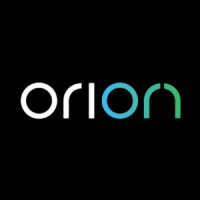
Orion Energy Systems Inc
NASDAQ:OESX


| US |

|
Johnson & Johnson
NYSE:JNJ
|
Pharmaceuticals
|
| US |

|
Berkshire Hathaway Inc
NYSE:BRK.A
|
Financial Services
|
| US |

|
Bank of America Corp
NYSE:BAC
|
Banking
|
| US |

|
Mastercard Inc
NYSE:MA
|
Technology
|
| US |

|
UnitedHealth Group Inc
NYSE:UNH
|
Health Care
|
| US |

|
Exxon Mobil Corp
NYSE:XOM
|
Energy
|
| US |

|
Pfizer Inc
NYSE:PFE
|
Pharmaceuticals
|
| US |

|
Palantir Technologies Inc
NYSE:PLTR
|
Technology
|
| US |

|
Nike Inc
NYSE:NKE
|
Textiles, Apparel & Luxury Goods
|
| US |

|
Visa Inc
NYSE:V
|
Technology
|
| CN |

|
Alibaba Group Holding Ltd
NYSE:BABA
|
Retail
|
| US |

|
3M Co
NYSE:MMM
|
Industrial Conglomerates
|
| US |

|
JPMorgan Chase & Co
NYSE:JPM
|
Banking
|
| US |

|
Coca-Cola Co
NYSE:KO
|
Beverages
|
| US |

|
Walmart Inc
NYSE:WMT
|
Retail
|
| US |

|
Verizon Communications Inc
NYSE:VZ
|
Telecommunication
|
Utilize notes to systematically review your investment decisions. By reflecting on past outcomes, you can discern effective strategies and identify those that underperformed. This continuous feedback loop enables you to adapt and refine your approach, optimizing for future success.
Each note serves as a learning point, offering insights into your decision-making processes. Over time, you'll accumulate a personalized database of knowledge, enhancing your ability to make informed decisions quickly and effectively.
With a comprehensive record of your investment history at your fingertips, you can compare current opportunities against past experiences. This not only bolsters your confidence but also ensures that each decision is grounded in a well-documented rationale.
Do you really want to delete this note?
This action cannot be undone.

| 52 Week Range |
0.77
1.53
|
| Price Target |
|
We'll email you a reminder when the closing price reaches USD.
Choose the stock you wish to monitor with a price alert.

|
Johnson & Johnson
NYSE:JNJ
|
US |

|
Berkshire Hathaway Inc
NYSE:BRK.A
|
US |

|
Bank of America Corp
NYSE:BAC
|
US |

|
Mastercard Inc
NYSE:MA
|
US |

|
UnitedHealth Group Inc
NYSE:UNH
|
US |

|
Exxon Mobil Corp
NYSE:XOM
|
US |

|
Pfizer Inc
NYSE:PFE
|
US |

|
Palantir Technologies Inc
NYSE:PLTR
|
US |

|
Nike Inc
NYSE:NKE
|
US |

|
Visa Inc
NYSE:V
|
US |

|
Alibaba Group Holding Ltd
NYSE:BABA
|
CN |

|
3M Co
NYSE:MMM
|
US |

|
JPMorgan Chase & Co
NYSE:JPM
|
US |

|
Coca-Cola Co
NYSE:KO
|
US |

|
Walmart Inc
NYSE:WMT
|
US |

|
Verizon Communications Inc
NYSE:VZ
|
US |
This alert will be permanently deleted.
 Orion Energy Systems Inc
Orion Energy Systems Inc
Orion Energy Systems Inc
Orion Energy Systems, Inc. engages in the design, development, and trade of lighting systems, and retrofit lighting solutions. The company is headquartered in Manitowoc, Wisconsin and currently employs 213 full-time employees. The company went IPO on 2007-12-19. The firm operates through three segments, Orion Engineered Systems Division (OES), Orion Distribution Services Division (ODS), and Orion U.S. Markets Division (USM). The company provides light emitting diode (LED) lighting systems, wireless Internet of things (IoT) enabled control solutions, project engineering, design energy project management and maintenance services. The OES segment develops and sells lighting products and provides construction and engineering services for its commercial lighting and energy management systems. The ODS segment focuses on selling lighting products through manufacturer representative agencies and a network of North American broadline, and electrical distributors and contractors. The USM segment sells commercial lighting systems and energy management systems to the wholesale contractor markets.

Orion Energy Systems, Inc. engages in the design, development, and trade of lighting systems, and retrofit lighting solutions. The company is headquartered in Manitowoc, Wisconsin and currently employs 213 full-time employees. The company went IPO on 2007-12-19. The firm operates through three segments, Orion Engineered Systems Division (OES), Orion Distribution Services Division (ODS), and Orion U.S. Markets Division (USM). The company provides light emitting diode (LED) lighting systems, wireless Internet of things (IoT) enabled control solutions, project engineering, design energy project management and maintenance services. The OES segment develops and sells lighting products and provides construction and engineering services for its commercial lighting and energy management systems. The ODS segment focuses on selling lighting products through manufacturer representative agencies and a network of North American broadline, and electrical distributors and contractors. The USM segment sells commercial lighting systems and energy management systems to the wholesale contractor markets.





























 You don't have any saved screeners yet
You don't have any saved screeners yet
